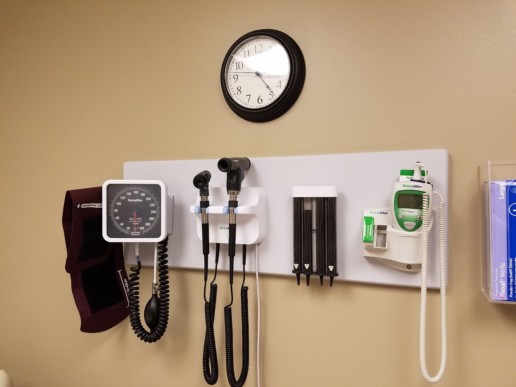Student loan benefits more popular with workers than employers
"While a student loan benefit is the most-requested financial benefit, it’s only third on the priority list for HR professionals." Find out more in this article.
If you ask them, 78 percent of employees laboring under a load of student debt will tell you that they want their bosses to provide a student loan benefit that will help them dig out.
Bosses, not so much. While a student loan benefit is the most-requested financial benefit, according to an HRDive report, it’s only third on the priority list for HR professionals.
Related: The problem with student-loan repayment benefits
It’s not just younger workers who want it, either. The 78 percent of employees who wish their jobs came with a student loan benefit includes 65 percent of workers over age 55 who have problems with current or future loan debt.
The report points to a CommonBond study that finds student loan benefits not only help to keep employees on the payroll and even better their job performance, but they also help in recruiting new talent. The study finds that 75 percent of all workers have paid for their own education via student loans, and 21 percent plan to take out student loans for a child or another family member in the next five years.
Oh, and another disconnect between boss and worker: while 75 percent of HR executives think their benefits offerings are innovative, only 50 percent of workers agree.
Money, of course, is a big worry for workers—and it’s not all about salary, with 44 million Americans weighed down by some $1.4 trillion in student debt. Worrying about lingering student loans also cuts productivity at work, in addition to subjecting workers to increasing stress, so it’s really an employer’s problem too.
Not only do students owe an average of more than $25,000 by graduation, figures from The Student Loan Report indicate that the loan default rate and delinquency rates are more than 10 percent and 5 percent, respectively—not exactly conducive to either peace of mind or high productivity at work. So employers are increasingly getting involved, considering tuition payment programs for employees who want to pursue a degree or add new skills.
And that can help both groups as employers become increasingly desperate for a more skilled employee base. It also helps employers as employee stress falls, potentially cutting health care costs as well and making workers more productive.
Source:
Satter M. (7 May 2018). "Student loan benefits more popular with workers than employers" [web blog post]. Retrieved from address https://bit.ly/2wi9yA0
Pay-to-shop health care incentives gaining traction
Laurie Cook went shopping recently for a mammogram near her home in New Hampshire. Using an online tool provided through her insurer, she plugged in her ZIP code. Up popped facilities in her network, each with an incentive amount she would be paid if she chose it.
Paid? To get a test? It’s part of a strategy to rein in health care spending by steering patients to the most cost-effective providers for non-emergency care.
State public employee insurance programs were among the early adopters of this approach. It is now finding a foothold among policymakers and in the private sector.
Scrolling through her options, Cook, a school nurse who is covered through New Hampshire’s state employee health plan, found that choosing a certain facility scored her a $50 check in the mail.
She then used the website again to shop for a series of lab tests. “For a while there, I was getting a $25 check every few weeks,” said Cook. The checks represented a share of the cost savings that resulted from her selections.
Lawmakers in nearby Maine took the idea further, recently enacting legislation that requires some private insurers to offer pay-to-shop incentives, part of a movement backed by a conservative foundation to get similar measures passed nationally.
Similar proposals are pending in a handful of other statehouses, including Virginia, West Virginia and Ohio.
“If insurance plans were serious about saving money, they would have been doing this stuff years ago,” said Josh Archambault, a senior fellow at the Foundation for Government Accountability, a limited-government advocacy group based in Naples, Fla., that promotes such “right-to-shop” laws. “This starts to peel back the black box in health care and make the conversation about value.”
Still, some economists caution that shop-around initiatives alone cannot force the level of market-based change needed. While such shopping may make a difference for individual employers, they note it represents a tiny drop of the $3.3 trillion spent on health care in the U.S. each year.
“These are not crazy ideas,” said David Asch, professor of medicine, medical ethics and health policy at the Penn Medicine Center for Health Care Innovation in Philadelphia. But it’s hard to get consumers to change behavior — and curbing health care spending is an even bigger task. Shopping incentives, he warned, “might be less effective than you think.”
If they achieve nothing else, though, such efforts could help remove barriers to price transparency, said Francois de Brantes, vice president and director of the Center for Value in Health Care at Altarum, a nonprofit that studies the health economy.
“I think this could be quite the breakthrough,” he said.
Yet de Brantes predicts only modest savings if shopping simply results in narrowing the price variation between high- and low-cost providers: “Ideally, transparency is about stopping folks from continuously charging more.”
Among the programs in use, only a few show consumers the price differences among facilities. Many, like the one Cook used, merely display the financial incentives attached to each facility based on the underlying price.
Advocates say both approaches can work.
“When your plan members have ‘skin in the game,’ they have an incentive to consider the overall cost to the plan,” said Catherine Keane, deputy commissioner of administrative services in New Hampshire. She credits the incentives with leading to millions of dollars in savings each year.
Several states require insurers or medical providers to provide cost estimates upon patients’ requests, although studies have found that information can still be hard to access.
Now, private firms are marketing ways to make this information more available by incorporating it into incentive programs.
For example, Vitals, the New Hampshire-based company that runs the program Cook uses, and Healthcare Bluebook in Nashville offer employers — for a fee — comparative shopping gizmos that harness medical cost information from claims data. This information becomes the basis by which consumers shop around.
Crossing Network Lines
Maine’s law, adopted last year, requires insurers that sell coverage to small businesses to offer financial incentives — such as gift cards, discounts on deductibles or direct payments — to encourage patients, starting in 2019, to shop around.
A second and possibly more controversial provision also kicks in next year, requiring insurers, except HMOs, to allow patients to go out-of-network for care if they can find comparable services for less than the average price insurers pay in network.
Similar provisions are included in a West Virginia bill now under debate.
Touted by proponents as a way to promote health care choice, it nonetheless raises questions about how the out-of-network price would be calculated, what information would be publicly disclosed about how much insurers actually pay different hospitals, doctors or clinics for care and whether patients can find charges lower than in-network negotiated rates.
“Mathematically, that just doesn’t work” because out-of-network charges are likely to be far higher than negotiated in-network rates, said Joe Letnaunchyn, president and CEO of the West Virginia Hospital Association.
Not necessarily, counters the bill’s sponsor, Del. Eric Householder, who said he introduced the measure after speaking with the Foundation for Government Accountability. The Republican from the Martinsburg area said “the biggest thing lacking right now is health care choice because we’re limited to our in-network providers.”
Shopping for health care faces other challenges. For one thing, much of medical care is not “shoppable,” meaning it falls in the category of emergency services. But things such as blood tests, imaging exams, cancer screening tests and some drugs that are administered in doctor’s offices are fair game.
Less than half of the more than $500 billion spent on health care by people with job-based insurance falls into this category, according to a 2016 study by the Health Care Cost Institute, a nonprofit organization that analyzes payment data from four large national insurers. The report also noted there must be variation in price between providers in a region for these programs to make sense.
Increasingly, though, evidence is mounting that large price differences for medical care exist — even among rates negotiated by the same insurer.
“The price differences are so substantial it’s actually scary,” said Heyward Donigan, CEO of Vitals.
At the request of Kaiser Health News, Healthcare Bluebook ran some sample numbers for a Northern Virginia ZIP code, finding the cost of a colonoscopy ranged from $670 to $6,240, while a knee arthroscopy ranged from $1,959 to $20,241.
Another challenge is the belief by some consumers that higher prices mean higher quality, which studies don’t bear out.
Even with incentives, the programs face what may be their biggest challenge: simply getting people to use a shopping tool.
Kentucky state spokeswoman Jenny Goins said only 52 percent of eligible employees looked at the shopping site last year — and, of those, slightly more than half chose a less expensive option.
“That’s not as high as we would like,” she said.
Still, state workers in Kentucky have pocketed more than $1.6 million in incentives — and the state said it has saved $11 million — since the program began in mid-2013.
Deductibles, the annual amounts consumers must pay before their insurance kicks in and are usually $1,000 or more, are more effective than smaller shopping incentives, say some policy experts.
In New Hampshire, it took a combination of the two.
The state rolled out the payments for shopping around — and a website to look for best prices — in 2010. But participation didn’t really start to take off until 2014, when state employees began facing an annual deductible, said Deputy Commissioner Keane.
Still, the biggest question is whether these programs ultimately cause providers to lower prices.
Anecdotally, administrators think so.
Kentucky officials report they already are witnessing a market response because providers want patients to have an incentive to choose them.
“We do know providers are calling and asking, ‘How do I get my name on that list’ [of cost-effective providers]?” said Kentucky spokeswoman Goins. “The only way they can do that is to negotiate.”
Read the article.
Source:
Appleby J., Kaiser Health News (5 March 2018). "Pay-to-shop health care incentives gaining traction" [Web blog Post]. Retrieved from address https://www.benefitspro.com/2018/03/05/pay-to-shop-health-care-incentives-gaining-tractio/
Two opportunities created by association health plans
The new regulations around association health plans (AHPs) — which loosen restrictions for small businesses, franchises and associations — create two distinct opportunities in the benefits industry.
The first is for brokers, who will be crucial advisors to employers eligible for the new coverage options now available.
The second opportunity is for benefits and HR tech vendors, who will be instrumental in managing the transactional and administrative challenges that would otherwise hinder AHP success.
What challenges do association health plans represent? Let’s consider an example — the Nashville Hot Chicken restaurant franchise.
Let’s say Nashville Hot Chicken has 1,000 franchisees, each with five full-time employees. Before AHP options became available to this organization, these five-employee groups would either have had to pursue small group coverage, or employees would have had to find individual plans.
Both options likely would have been prohibitively expensive for the organization or the employees. With the new AHP regulations, however, these 1,000 franchisees may be able to pull all 5,000 workers together and create a large group benefits plan.
In doing so, they would reap the advantages of collective purchasing, just like large groups do. However, this AHP would not work like a regular group plan.
If a regular group has 5,000 employees, they would all be part of a centrally-operated payroll system and the insurance companies would receive just one check for all of the employees enrolled at the group. But under an AHP of franchisees, all the payroll systems would operate independently, and there is no clear, centralized entity to pay carriers.
This creates a massive administrative headache for Nashville Hot Chicken corporate, as well as all the individual franchise owners. In other words, who is going to manage the AHP?
Here’s where the brokers come in. Employers need brokers to walk them through all the complexities of AHPs, including sourcing carriers, third-party vendors, and compliance needs.
It would also be incredibly impractical to manage 5,000 employees through 1,000 separate businesses without a benefits and HR platform.
But brokers can provide a solution to this challenge by adopting a platform. With a benefits and HR system, the various administrative differences from franchisee to franchisee can be accounted for, while still allowing the 5,000-life group to enroll in the group offering.
By removing the administrative headache, benefits tech makes AHPs a real option for Nashville Hot Chicken. But it also gives the tech-savvy broker a clear leg up on the competition. A broker without a tech solution will be at a severe disadvantage for Nashville Hot Chicken’s business compared to a broker who has a platform.
So as small employers, franchisees and industry associations band together for group coverage, benefits tech can give brokers a competitive differentiator for this new business segment.
Read the article.
Source:
Tolbert A. (1 March 2018). "Two opportunities created by association health plans" [Web Blog Post]. Retrieved from address https://www.benefitspro.com/2018/03/01/two-opportunities-created-by-association-health-pl/
The decline of the employment drug test
Employers are struggling to hire workers in tightening U.S. job market. Marijuana is now legal in nine states and Washington, D.C., meaning more than one in five American adults can eat, drink, smoke or vape as they please. The result is the slow decline of pre-employment drug tests, which for decades had been a requirement for new recruits in industries ranging from manufacturing to finance.
As of the beginning of 2018, Excellence Health Inc., a Las Vegas-based health care company with around 6,000 employees, no longer drug tests people coming to work for the pharmaceutical side of the business. The company stopped testing for marijuana two years ago. “We don’t care what people do in their free time,” said Liam Meyer, a company spokesperson. “We want to help these people, instead of saying: ‘Hey, you can’t work for us because you used a substance,’” he added. The company also added a hotline for any workers who might be struggling with drug use.
Last month, AutoNation Inc., the largest U.S. auto dealer, announced it would no longer refuse job applicants who tested positive for weed. The Denver Post, owned by Digital First Media, ended pre-employment drug testing for all non-safety sensitive positions in September 2016.
So far, companies in states that have legalized either recreational or medicinal marijuana are leading the way on dropping drug tests. A survey last year by the Mountain States Employers Council of 609 Colorado employers found that the share of companies testing for marijuana use fell to 66 percent, down from 77 percent the year before.
Drug testing restricts the job pool, and in the current tight labor market, that’s having an impact on productivity and growth. In surveys done by the Federal Reserve last year, employers cited an inability by applicants to pass drug tests among reasons for difficulties in hiring. Failed tests reached an all-time high in 2017, according to data from Quest Diagnostics Inc. That’s likely to get worse as more people partake in state-legalized cannabis.
“The benefits of at least reconsidering the drug policy on behalf of an employer would be pretty high,” said Jeremy Kidd, a professor at Mercer Law School, who wrote a paper on the economics of workplace drug testing. “A blanket prohibition can’t possibly be the most economically efficient policy.”
Companies are having a hard enough time hiring, with unemployment hovering around 4 percent. “Employers are really strapped and saying ‘We’re going to forgive certain things,’” said James Reidy, a lawyer that works with employers on their human resources policies. Reidy knows of a half-dozen other large employers that have quietly changed their policies in recent years. Not all companies want to advertise the change, fearing it might imply they are soft on drugs. (Even former FBI director James Comey in 2014 half-joked about the need for the bureau to re-evaluate its drug-testing policy to attract the best candidates.)
Why the change? Pre-employment testing is no longer worth the expense in a society increasingly accepting of drug use. A Gallup poll in October found that 64 percent of Americans favor legalization. That’s the most since the company first started asking the question in 1969, when only 12 percent supported changing the plant’s status. Drug tests costs from $30 to $50 a pop, but the potential costs to an employer are far greater than the actual test.
In addition to helping ease the labor market, eliminating drug testing could have even broader benefits for the economy, said Kidd. Employers could hire the best, theoretically most-productive workers, he said, instead of rejecting people based on their recreational habits. Companies have said they lose out to foreign competitors because they can’t find people who can pass drugs tests, a particularly acute problem in the areas most affected by the opioid crisis.
Some jobs, such as those involving the use of heavy machinery, will always require drug tests. Excellence Health still drug-tests any employee working on a government contract, even in states where weed is legal. Companies are also reserving the right to test after an accident or if an employee comes to work notably impaired.
Not all companies are ready to change course. Restaurant Brands International Inc., which owns Burger King, hasn’t altered its corporate marijuana policy, said Chief Executive Officer Daniel Schwartz. Ford Motor Co. still treats pot as an illegal substance, according to a company spokeswoman.
Weed-averse employers have a notable ally: Attorney General Jeff Sessions. A longtime opponent of legalization, Sessions rescinded in January the Obama-era policies that enabled state-legalized cannabis industries to flourish. The uncertainty caused by the Justice Department’s actions may discourage companies from making changes.
Employers can also get discounts on workers’ compensation insurance for maintaining a “drug-free workplace” by, in part, drug-testing workers. But the types of workplaces forgoing pre-employment tests already enjoy relatively small savings. A job in an office setting, for example, won’t have very many workers’ compensation claims, compared to a factory. The money saved by meeting the qualifications for a drug-free zone isn’t worth it.
“We assume that a certain level of employees are going to be partaking on the weekends,” said Reidy, the employment lawyer. “We don’t care. We’re going to exclude a whole group of people, and we desperately need workers.”
Read the article.
Source:
Greenfield R, Kaplan J. (5 March 2018). "The decline of the employment drug test" [Web Blog Post]. Retrieved from address https://www.benefitspro.com/2018/03/05/the-decline-of-the-employment-drug-test/
3 simple ways to get motivated
Getting and staying motivated can be tough, whether you are coming back from vacation, dealing with something you’d rather avoid or getting focused on a Monday. Not every day will be super productive, and there is no sense in punishing yourself because of it, but there are three great ways to get back on track.
One way is to take the simplest task and make it even simpler. For example, if you have to write an email, then focus on doing the first sentence. Make writing the first sentence your goal. It may feel ridiculously easy, which is the point: Once you write that first sentence, then you will likely have the confidence to begin on the second sentence, and so on.
Another approach is to think about being in bed, tonight, right before you go to sleep. What did you accomplish today? Did you feel good about what got done? What do you wish you had gotten done so you wouldn’t be worried about doing it tomorrow? Now you can stop imagining: It’s wonderful that you still have the day ahead of you and you can get things done now.
Lastly, work on your next task for only five minutes. It will be a focused five minutes, which means no multitasking. Set an alarm as necessary. Chances are that the five minutes will go by quickly and, if you like, you can set the alarm for another five minutes.
Our motivation is usually hampered by either inertia, like when we have taken a break, or by timidity, like when we are intimidated by a major goal. By using these three methods, you can move towards success and focus on the next small step towards your big successful goal.
Read the article.
Source:
Brown D. (21 February 2018). "3 simple ways to get motivated" [Web Blog Post]. Retrieved from address https://workwell.unum.com/2018/02/3-simple-ways-to-get-motivated/
Apple launching concierge health care centers for employees
Did you know Apple is now offering healthcare centers for their employees? Check out this article from Benefit Pro for further information.
This spring, Apple employees will see the first phase of Apple’s new approach to employee health care: on-site health clinics.
According to Healthcare IT News, Apple plans to launch a group of internal health centers as it moves to boost the health and wellness of its employees. According to the report, the company has already “quietly published a webpage for the program, called AC Wellness Network, which includes a description of the company’s goals as well as information on a number of open positions.”
“AC Wellness Network believes that having trusting, accessible relationships with our patients, enabled by technology, promotes high-quality care and a unique patient experience,” Apple has said on the webpage. It continues, “The centers offer a unique concierge-like healthcare experience for employees and their dependents. Candidates must have an appreciation for the patient experience and passion for wellness and population health—integrating best clinical practices and technology in a manner that drives patient engagement.”
Apple’s move comes in the wake of an earlier declared partnership among Amazon, JPMorgan Chase and Berkshire Hathaway for their own independent health care company intended to bolster employee health at lower cost than conventional providers.
AC Wellness, says the report, will exist as “an independent medical practice,” although the company is a subsidiary of Apple. Job listings include not just physicians but also such positions as workflow designers, and the website listings suggest the first centers will be located in Santa Clara, California and in the company’s Cupertino, California campus.
Other recent health care steps taken by the company, according to an HRDive report, include its January announcement that it is making personal health records accessible on the latest iPhones, as well as its exploration of ways its Apple Watch could have medical applications, like detecting irregular heartbeats in wearers.
According to a CNBC report, some former Stanford Health Care employees have been affiliated with AC Wellness for at least five months. Says Healthcare IT News, “[t]hese sources also said that Apple will use the centers as a testing ground for its upcoming health and wellness products prior to large-scale consumer rollout, and that the company notified third-party vendors this week about its upcoming health clinics.”
Read the article.
Source: Satter M. (1 March 2018). "Apple launching concierge health care centers for employees" [Web Blog Post]. Retrieved from address https://www.benefitspro.com/2018/03/01/apple-launching-concierge-health-care-centers-for/
Employer Responsibility Under the Affordable Care Act
Here's a helpful chart from the Kaiser Family Foundation to decipher the penalties employers may have for not offering ACA coverage in 2018.
The Affordable Care Act does not require businesses to provide health benefits to their workers, but applicable large employers may face penalties if they don’t make affordable coverage available. The employer shared responsibility provision of the Affordable Care Act penalizes employers who either do not offer coverage or do not offer coverage that meets minimum value and affordability standards. These penalties apply to firms with 50 or more full-time equivalent employees. This flowchart illustrates how those employer responsibilities work.
Read the article.
Source:
Kaiser Family Foundation (5 March 2018). "Employer Responsibility Under the Affordable Care Act" [Web Blog Post]. Retrieved from address https://www.kff.org/infographic/employer-responsibility-under-the-affordable-care-act/
Strengthening the Relationship between Education and Employers: Johnny C. Taylor, Jr., Appointed Chair of President’s Board of Advisors on HBCUs
From the SHRM CEO, here is his opinion on the newly appointed Chair of President’s Board of Advisors on HBCUs.
Johnny C. Taylor, Jr., SHRM-SCP, president and chief executive officer of the Society for Human Resource Management, was appointed chair of the President’s Board of Advisors on Historically Black Colleges and Universities (HBCUs) at a White House ceremony today.
In accepting the volunteer advisory appointment to the White House Initiative on HBCUs by President Donald Trump, Taylor gave these remarks:
Thank you, President Trump and Secretary DeVos.
I appreciate the trust you have placed in me to chair the President’s Board of Advisors on HBCUs. It has been my life’s work to unleash talent — in all its forms, from wherever it originates.
As CEO of the Society for Human Resource Management (SHRM), I work with employers across the country. No matter their industry, size or longevity, today’s organizations all share the same challenge — closing the skills gap while building diverse, inclusive, engaged workforces.
For each of them, the “War for Talent” will never end and, thanks to this incredibly strong economy we’re experiencing, it is now a way of life. And today, people are an organization’s only competitive edge.
Employers depend on our country’s educational institutions as a reliable source of the multi-faceted talent they need. HBCUs are a critical conduit for this talent. Every year, over 300,000 students turn to these institutions for their education and to prepare them for their careers.
This President’s Advisory Board can be the nexus between higher education institutions and employers. As a CEO (in both non-profit and for-profit businesses), a former Fortune 500 chief HR executive, and someone with over 7½ years of experience in the HBCU space, I am up for this very challenge.
At SHRM, we are the experts on people and work and on building powerfully diverse organizational cultures that drive success. SHRM’s 300,000 members impact the lives of over 100 million people in the American workforce. SHRM is also an experienced academic partner, currently providing human resources curricula through 465 programs on 354 college campuses.
By working together, across all sectors, the HR profession, HBCUs and this Advisory Board can strengthen the relationship between education and employers. This Advisory Board can facilitate this critical relationship and support innovations in work-based learning opportunities for HBCU students. And as the world’s largest human resources association, SHRM can work with CEOs to connect industry to the diverse talent at these institutions.
This Board has an incredible opportunity to highlight HBCUs as wellsprings of the diverse talent American employers want and need today. HR and education, along with the support of this administration, must move together, forward.
Read the article.
Source: SHRM (27 February 2018). "Strengthening the Relationship between Education and Employers: Johnny C. Taylor, Jr., Appointed Chair of President’s Board of Advisors on HBCUs" [Web Blog Post]. Retrieved from address https://blog.shrm.org/blog/strengthening-the-relationship-between-education-and-employers-johnny-c-tay
While Talk About Opioids Continues In D.C., Addiction Treatment Is In Peril In States
How is Washington handling the opioid crisis? Let's find out in this article from Kaiser Health News.
Opioids were on the White House agenda Thursday — President Trump convened a summit with members of his administration about the crisis. And Congress authorized funds for the opioid crisis in its recent budget deal — but those dollars aren’t flowing yet, and states say they are struggling to meet the need for treatment.
The Oklahoma agency in charge of substance abuse has been told by the state’s legislature to cut more than $2 million from this fiscal year’s budget.
“Treatment dollars are scarce,” said Randy Tate, president of the Oklahoma Behavioral Health Association, which represents addiction treatment providers.
It’s like dominoes, Tate said. When you cut funding for treatment, other safety-net programs feel the strain.
“Any cuts to our overall contract,” he said, “really diminish our ability to provide the case management necessary to advocate for homes, food, shelter, clothing, primary health care and all the other things that someone needs to really be successful at tackling their addiction.”
In just three years, Oklahoma’s agency in charge of funding opioid treatment has seen more than $27 million dollars chipped away from its budget — thanks to legislative gridlock, slashed state taxes and a drop in oil prices (with the additional loss in state tax revenue that resulted).
Jeff Dismukes, a spokesman for Oklahoma’s Department of Mental Health and Substance Abuse Services, says the already lean agency has few cost-cutting options left.
“We always cut first to administration,” he said, “but there’s a point where you just can’t cut anymore.”
The agency may end up putting off payments to treatment providers until July — the next fiscal year. Tate says that could be devastating.
“Very thinly financed, small rural providers are probably at risk of going out of business entirely — up to and including rural hospitals,” he said.
Getting treatment providers to open up shop in rural areas is really hard, even in good times, and more financial uncertainty could make that problem worse. In the meantime, according to an Oklahoma state commission’s opioid report, just 10 percent of Oklahomans who need addiction treatment are getting it.
That statistic is similar in Colorado. And as 2018 began, Colorado’s escalating opioid crisis got worse, when the state’s largest drug and alcohol treatment provider, Arapahoe House, shut its doors.
The facility provided recovery treatment to 5,000 people a year. Denise Vincioni, who directs another treatment center, the Denver Recovery Group, says other facilities have scrambled to pick up the patients.
Most of Arapahoe’s clients were on Medicaid. Autumn Haggard-Wolfe, a two-time Arapahoe House client who is now in recovery, worries the facility’s closing will have dire consequences, especially for people who need inpatient care, as she did.
“I feel like the only other option right now in therapy would be jail for people,” she said, “and people die in there from withdrawing.”
Arapahoe House’s CEO blamed its closure on the high cost of care and poor government reimbursement for services.
The mother of Colorado state lawmaker Brittany Pettersen struggled with addiction, and was treated at Arapahoe House. Pettersen says treatment centers rely on a crazy quilt of funding sources and are chronically underfunded — often leaving people with no treatment options.
“We have a huge gap in Colorado,” Pettersen said, “and that was before Arapahoe House closed.”
She is pushing legislation in the state to increase funding for treatment. But to get tens of millions of dollars in federal matching funds, Colorado lawmakers need to approve at least $34 million a year in new state spending.
That price tag may simply be too high for some lawmakers. But either way, she added, “It’s going to take a lot to climb out of where we are.”
Colorado did get new federal funds to fight the opioid crisis through the 21st Century Cures Act, passed in December of 2016, but it was just $7.8 million a year for two years — divvied up among a long list of programs.
Read the article.
Source: Daley J.,Fortier J. (5 March 2018). "While Talk About Opioids Continues In D.C., Addiction Treatment Is In Peril In States" [Web Blog Post]. Retrieved from address https://khn.org/news/while-talk-about-opioids-continues-in-dc-addiction-treatment-is-in-peril-in-states/
Miserable Modern Workers: Why Are They So Unhappy?
It's a new year, which means working to improve the bad. What's so bad about today's work environment? Employees are more disengaged than ever. So, how can employers fix that? Let's take a look at the basic facts and possible first steps.
Today's workers are disengaged. They lack motivation. They're bored. They're stressed. They're burned out.
Researchers at Gallup, Randstad and Mercer conducting survey after survey have come to these conclusions. In fact, these surveys seem to paint an increasingly bleak picture of life at work.
At a time when technology has arguably made the workplace more efficient than ever, laws are protecting employees better than ever, and companies are offering benefits perhaps more generous than ever, why would U.S. workers be so checked out?
"One could argue that today's employees are as equally stressed as their predecessors, but for different reasons," said Jodi Chavez, president of Atlanta-based Randstad Professionals, a segment of Randstad US, which provides finance, accounting, HR, sales, marketing, legal staffing and recruitment services. "They fear having their jobs outsourced to another country, have anxiety about how best to work alongside new technologies such as automation and robotics, have increased financial pressures with rising student loan debt and late retirement, and feel pressure to be 'on' and answering e-mails 24/7."
Disengagement Can Lead to Bad Habits
Gallup has been measuring employee engagement in the United States since 2000 and finds that less than one-third of U.S. workers report that they are "engaged" in their jobs. Of the country's approximately 100 million full-time employees, 51 percent say they are "not engaged" at work—meaning they feel no real connection to their jobs and tend to do the bare minimum. Another 17.5 percent are "actively disengaged"— meaning they resent their jobs, tend to gripe to co-workers and drag down office morale. Altogether, that's a whopping 68.5 percent who aren't happy at work.
Recently, Randstad US found in its own survey that disengagement has led to some bad habits among the nation's workers: Unhappy workers admitted that while on the job, they drank alcohol (5 percent), took naps (15 percent), checked or posted on social media (60 percent), shopped online (55 percent), played pranks on co-workers (40 percent), and watched Netflix (11 percent).
"Some employers may see checking social media a few times a day as a small offense, while napping on the job or watching Netflix could be considered serious safety hazards for other employers," Chavez said. "Really, we found that these results are part of a bigger story—a trend of burnout and job dissatisfaction. Burnout is a natural human reaction to stressful environments, or long workdays, but it may also be a sign that an employee isn't the right fit for a position. It's important for employers to be aware of these habits, evaluate if they're a sign of a larger issue and identify what they can do to help employees feel appreciated."
Even if today's workers are no more disengaged than workers of decades past, three things may be making the "commentary on disengagement louder," said Ken Oehler, global culture and engagement practice leader with London-based Aon:
Scrutiny. "Management focus on people and talent is much greater now than in the past," he said. "Three or four decades ago, studies could not find a link between job satisfaction and performance, and the concept of engagement did not even exist. There are now many studies establishing the link between engaged employees and better performance. With this we have seen a great increase in the measurement and thirst for understanding [of] how to maximize the employee experience, employee engagement and employee performance. So when the rate of disengaged employees does not seem to change much, management becomes dissatisfied and wants to know what can be done."
Expectations of work. "Employee expectations about work are dramatically different than a few decades past," he said. "Few workers sign up thinking they will be employed by the same company for life and be rewarded with a nice pension. Most Millennials don't want that. They thirst for development, advancement, movement, impact and purpose. So, when that doesn't happen, [discontent] can get loud."
Rate of change. The constant technological demands and steep learning curves of many modern jobs can overwhelm the senses, he said. "I believe many workers are worried about keeping up with this rate of change and having the relevant skills required for the future. Companies and employees need to be smarter and faster, and the technology involved in work is largely unchanged or inadequate. This is really stressful when the need and rate of change increases and the technology, tools and processes do not support this."
Are Small 'Fixes' Enough?
The "fixes" that employee engagement experts often suggest to make workers happier on the job, however, may not be making much of a difference—at least not if recent surveys measuring employee satisfaction are to be believed.
"Will simple things like getting a good night's sleep, asking for help or finding a creative outlet transform every employee's attitude?" asked Chavez. "No. But these small fixes are easy, actionable things that people can try if they're truly stressed, exhausted or having external problems, as these changes can boost productivity and overall happiness at work. If not, then maybe the employee needs to do some deeper exploring as to whether the job, employer or even career are a good fit."
The pressures put on modern workers to "do more with less" may be the result of business shareholders who—having grown cautious following the Great Recession—aren't willing to expand budgets to hire more people at companies or better compensate those already there, Chavez and Oehler said. Worker pay has remained relatively flat since the recession, with nominal annual increases even though the economy and markets are said to be booming.
"Ensuring that you get pay right is critical," Oehler said. "Perceptions of pay inequity will erode trust and engagement."
Said Chavez: "It's true that wages have remained relatively flat for the last several years. At the same time, there's more competition for top, skilled talent, so employers are becoming more creative when it comes to benefits. These benefits can come in many different forms—student loan benefits, access to telemedicine, stipends for commuting, flexible hours and remote work arrangements. While some may prefer higher salary over increased vacation time, some value robust learning and development programs. As for what makes work gratifying, every employee is different."
Source:
Wilkie D. (2 November 2017). "Miserable Modern Workers: Why Are They So Unhappy?" [web blog post]. Retrieved from address https://www.shrm.org/resourcesandtools/hr-topics/employee-relations/pages/employee-engagement-.aspx










